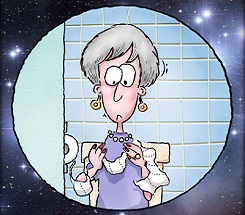 When in the course of human events, it becomes necessary for one… wait. Sorry. I was saving that for another blog.
When in the course of human events, it becomes necessary for one… wait. Sorry. I was saving that for another blog.
If you paid attention during government or history class (I was at best, 73% there), you’d recognize my initial sentence as the opening salvo of the Declaration of Independence. Its words have stood the test of time, the test of wars, and largely the test of politicians–though it was crafted by politicians.
So, let me ask you this. If you could declare your Independence, what would you choose to be independent of? As a teacher, I can guess there’s no shortage of items on your wish list. Students who mouth off? Students who don’t care? Parents who don’t care? Cheaters? How about (this is a big one) your school’s budgetary restrictions? All likely valid points for a great discussion, but let’s focus on the money for a moment.
How often have you heard the phrase “We need you to do more with less.”? The recent recession and ensuing budget cuts have educators running and scrambling like squirrels at a sunflower-seed truck accident. I guess giving up is an option, if you could do it without your students’ knowledge (tricky). But why not find a way to make the best of items you have at hand? Let’s get creative!
The Toilet Paper Solar System. Find a long hallway (best if scheduled between class breaks) or a large room (the gym would work if it’s not busy), gather up 1 large round thing (perhaps a basketball, to stand in for the sun), and 8 or 9 smaller round things (golf balls, baseballs, marbles, olives?) to stand in for the planets, and have a tape measure handy (or someone with 12-inch shoes). I say 8 or 9 objects for the planets depending on how you personally feel about Pluto’s recent demise. You can even throw in a few small rocks for the asteroid belt, or heck, a belt. Most importantly, have your students help in rounding up these items. It doesn’t have to be your job.
Starting with the basketball, roll out parallel lines of the toilet paper that approximate the distances to each of the planets. If you use 3 feet equal to one AU (astronomical unit, or 93 million miles/150 million km), your distances would roughly be Mercury (14 in.), Venus (26 in.), Earth (36 in.), Mars (55 in.), Asteroid Belt (8.25 ft.), Jupiter (15.6 ft.), Saturn (28.6 ft.), Uranus (57.6 ft.), Neptune (90.3 ft.), and Pluto (119 ft.). The website StarrySkies.com has a wonderful chart on those relative distances.
Though the toilet paper is inconsequential once the measurements are taken, it provides a visual clue to the ever increasing distances between the planets. The sizes of the planets relative to each other can be discussed and swapped out if necessary, and if you want to kick it up a notch, ask your pupils to dig out a map and find the nearest towns or cities that lie at 71 miles and 152 miles from the school (respectively, the distances to the Oort Comet Cloud and Alpha Centauri, the nearest star).
Be sure to grab some photos with your phone or camera before you disassemble your project, and make sure the toilet paper makes it way into the recycling bin (and not strung through the trees on the school grounds, as it is wont to do.) And don’t forget to return your planetary stand-ins to their previous places–except maybe the olive. Eww!
Teach. Learn. Enjoy.